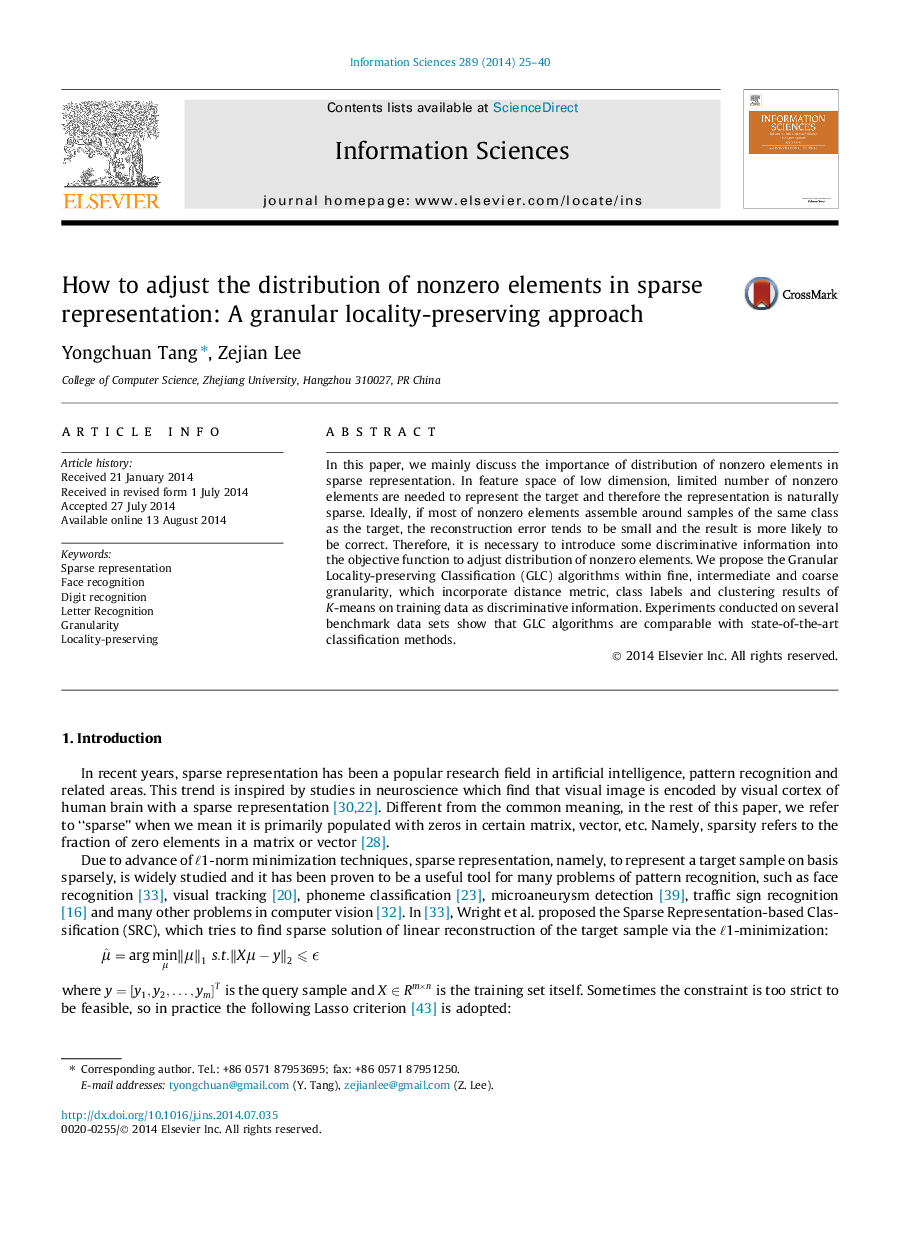| Article ID | Journal | Published Year | Pages | File Type |
|---|---|---|---|---|
| 392364 | Information Sciences | 2014 | 16 Pages |
•Incorporating local labels may improve discriminative capability of sparse representation.•Local samples are more possible to reconstruct the target in GLC algorithm.•GLC algorithm is comparable with the-state-of-art classification methods.
In this paper, we mainly discuss the importance of distribution of nonzero elements in sparse representation. In feature space of low dimension, limited number of nonzero elements are needed to represent the target and therefore the representation is naturally sparse. Ideally, if most of nonzero elements assemble around samples of the same class as the target, the reconstruction error tends to be small and the result is more likely to be correct. Therefore, it is necessary to introduce some discriminative information into the objective function to adjust distribution of nonzero elements. We propose the Granular Locality-preserving Classification (GLC) algorithms within fine, intermediate and coarse granularity, which incorporate distance metric, class labels and clustering results of K-means on training data as discriminative information. Experiments conducted on several benchmark data sets show that GLC algorithms are comparable with state-of-the-art classification methods.
